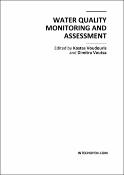Options
Evaluation of drinking water quality in three municipalities of Romania: the influence of municipal and customer’s distribution systems concerning trace metals
Date issued
2012
Abstract
This research activity demonstrates that materials used in water distribution systems are
part of the overall treatment process that affect the water quality which consumers drink at their tap. The interaction between water and the infrastructure used for its supply are
fundamental in producing safety drinking water. Subtle reactions between water and
different materials used for its transport can affect the finale quality delivered to consumers. The study, developed in the period June 2009 – June 2011, in a project regarding safety of drinking water distribution systems in some municipalities from Romania, demonstrated that materials used in drinking water domestic installations have a major contribution in the deterioration of water quality supplied by local distribution operators. In some locations, in first draw samples collected in the morning from kitchen cold taps were detected high quantity of Cu, Fe, Ni and Pb correlated with materials used in internal distribution system (Cu pipes, Pb pipes, PVC pipes, branch pipes, cast iron and unprotected steel pipes, Ni-Cr plated taps). The main causes are the process of water stagnation and the lack of maintenance of the internal distribution materials.
For samples were collected with fully flushed procedure, the quality of drinking water was better, the number of non-compliance samples decreased with 50%.
The customers were advised that, it be not recommended to use the first draw water for
cooking and drinking purpose. Recommendations in cases of exceeding the limit values of metals in drinking water were either flushing water for more than five minutes and then use water for household consumption or replacement of pipes and fittings in both, local or domestic distribution systems.
part of the overall treatment process that affect the water quality which consumers drink at their tap. The interaction between water and the infrastructure used for its supply are
fundamental in producing safety drinking water. Subtle reactions between water and
different materials used for its transport can affect the finale quality delivered to consumers. The study, developed in the period June 2009 – June 2011, in a project regarding safety of drinking water distribution systems in some municipalities from Romania, demonstrated that materials used in drinking water domestic installations have a major contribution in the deterioration of water quality supplied by local distribution operators. In some locations, in first draw samples collected in the morning from kitchen cold taps were detected high quantity of Cu, Fe, Ni and Pb correlated with materials used in internal distribution system (Cu pipes, Pb pipes, PVC pipes, branch pipes, cast iron and unprotected steel pipes, Ni-Cr plated taps). The main causes are the process of water stagnation and the lack of maintenance of the internal distribution materials.
For samples were collected with fully flushed procedure, the quality of drinking water was better, the number of non-compliance samples decreased with 50%.
The customers were advised that, it be not recommended to use the first draw water for
cooking and drinking purpose. Recommendations in cases of exceeding the limit values of metals in drinking water were either flushing water for more than five minutes and then use water for household consumption or replacement of pipes and fittings in both, local or domestic distribution systems.
Files
Loading...
Name
Capitol carte 2012 -apa potabila.pdf
Size
1.18 MB
Format
Adobe PDF
Checksum
(MD5):a42b288ebbfe4687ff99897f0bb91968